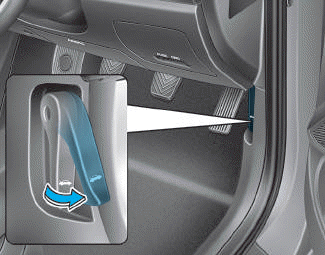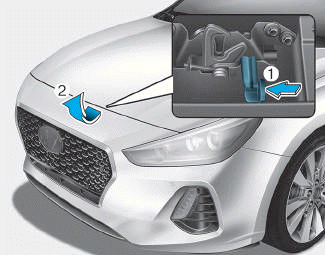Hyundai i-30: Engine Mechanical System / Repair procedures
Hyundai i30 (PD) 2018-2025 Service Manual / Engine Mechanical System / Repair procedures
| Compression Pressure Inspection |
|
| 1. |
Warm up and stop engine.
Allow the engine to warm up to normal operating temperature.
|
| 2. |
Remove the engine cover.
(Refer to Engine and Transaxle Assembly - "Engine Cover")
|
| 3. |
Remove the ignition coils.
(Refer to Engine Electrical System - "Ignition Coil")
|
| 4. |
Remove the spark plugs.
(Refer to Engine Electrical System - "Spark Plug")
|
| 5. |
Check the cylinder compression pressure.
|
| 6. |
Reinstall the spark plugs.
|
| 7. |
Connect the injector connectors.
|
| 8. |
Install the ignition coil.
|
| 9. |
Connect the ignition coil connectors.
|
| 10. |
Some DTC's may exist after the inspection test and may need to be manually
cleard with diagnostic tool.
|
 Specifications
Specifications
Specifications
Description
Specification
Limit
General
Type
In-line, DOHC
Number of cylinders
4
Bore
71...
 Troubleshooting
Troubleshooting
Troubleshooting
Symptom
Suspect area
Remedy
Engine misfire with abnormal internal lower engine noises...
Other information:
Hyundai i30 (PD) 2018-2025 Service Manual: Coolant
Repair procedures Replacement and Air Bleeding • Never remove the reservoir tank cap when the engine is hot. Serious scalding could be caused by hot fluid under high pressure escaping from the radiator...
Hyundai i30 (PD) 2018-2025 Owner's Manual: Auto door lock/unlock features
Impact sensing door unlock system (if equipped) All doors will be automatically unlocked when an impact causes the air bags to deploy. Speed sensing door lock system (if equipped) All doors will be automatically locked when vehicle speed exceeds 9 mph (15 km/h)...
Categories
- Manuals Home
- 3rd Generation i30 Owners Manual
- 3rd Generation i30 Service Manual
- Drive mode integrated control system
- Exhaust System (DPF) Warning Light. Glow Indicator Light
- Shift-lock system. Shift-lock release
- New on site
- Most important about car
Bonnet
Opening the bonnet

1. Park the vehicle and set the parking brake.
2. Pull the release lever to unlatch the bonnet. The bonnet should pop open slightly.

Copyright © 2025 www.hi30.net


